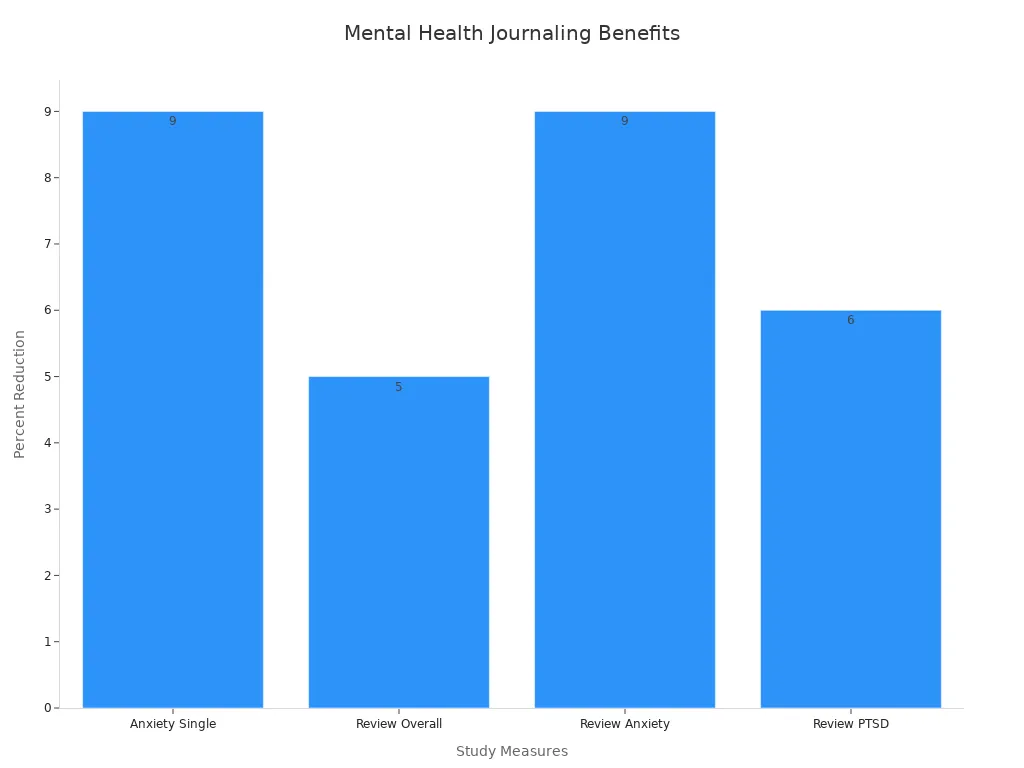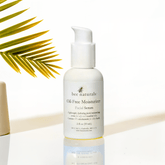Managing Stress (Cortisol) and Finding Your Zen Space

Stress can feel overwhelming, can’t it? It sneaks into your daily life, affecting your mind and body in ways you might not even realize. Did you know that 76% of adults report that stress impacts their health, leading to headaches, fatigue, anxiety, and even sadness? Prolonged stress can also contribute to serious conditions like diabetes, obesity, and cardiovascular disease. But here’s the good news—you have the power to take control. Incorporating stress management strategies, grounding techniques, and serenity-enhancing activities can help you create balance and calm in your life. These practices not only support your well-being but also pave the way to a more peaceful and centered existence. Ready to embrace your path to wellness and serenity?
Key Takeaways
Stress can harm your health. Notice its effects and learn to handle it.
Add deep breathing and mindfulness to your daily habits to feel calmer.
Make a peaceful space that helps you relax and shows who you are.
Focus on good sleep and healthy eating to keep your mind strong.
Stay close to helpful friends and ask experts for support if stress gets too hard.
Understanding Stress and Cortisol
What is Cortisol?
Cortisol is often called the "stress hormone," but it does so much more than that. It’s a steroid hormone produced by your adrenal glands, which sit right above your kidneys. When your body senses stress, cortisol kicks in to help you respond. It’s like your body’s built-in alarm system, preparing you to handle challenges. But cortisol isn’t just about stress. It also plays a role in regulating your metabolism, reducing inflammation, and even supporting your mental wellness.
Here’s a quick breakdown of cortisol’s key roles:
Aspect of Cortisol's Role |
Description |
|---|---|
Synthesis and Transport |
Cortisol travels through your body mostly in inactive forms, bound to proteins like transcortin and albumin. |
Metabolic Effects |
It helps regulate how your body uses proteins, carbs, and fats for energy. |
Immune Response |
Cortisol reduces inflammation and helps control your immune system. |
Stress Management |
It prepares your body to handle stress, influencing your mood and behavior. |
Neuroplasticity |
It affects your brain’s ability to adapt and process pain during stressful times. |
Effects of Stress and High Cortisol Levels
Stress can feel like a constant companion, can’t it? When you’re under stress for too long, your cortisol levels can stay elevated, and that’s when problems start. Chronic stress keeps your body’s stress response on overdrive, which can lead to health issues like high blood pressure, weight gain, and even heart disease.
Studies show that prolonged stress can disrupt your body’s balance. For example, it can increase your appetite and cause your body to store more fat. It can also lead to muscle tension, headaches, and trouble sleeping. Over time, these effects can take a toll on your mental health and physical well-being.
Interestingly, research has found that people with certain personality traits, like neuroticism, may have a blunted cortisol response to stress. This means their bodies don’t produce enough cortisol when needed, which can also lead to health challenges.
Why Stress Management is Vital for Well-Being
Managing stress isn’t just about feeling better in the moment—it’s about protecting your long-term health. Chronic stress doesn’t just affect your body; it impacts your mental wellness too. It can make you feel anxious, irritable, or even depressed. That’s why stress management is so important.
When you take steps to regulate cortisol levels, you’re giving your body a chance to recover and reset. Simple practices like deep breathing, mindfulness, and regular exercise can help you feel more balanced. These habits not only improve your mental health but also support your overall well-being.
Remember, stress is a part of life, but it doesn’t have to control you. By focusing on stress management, you can create a healthier, more peaceful life for yourself.
Stress Management Strategies for Grounding and Serenity

Stress can feel like a heavy weight on your shoulders, but the right strategies can help you feel grounded and serene. Let’s explore some simple yet powerful ways to manage stress and enhance your well-being.
Deep Breathing and Relaxation Techniques
Have you ever noticed how your breathing changes when you’re stressed? It becomes shallow and quick, making you feel even more tense. That’s where mindful breathing comes in. By focusing on slow, deep breaths, you can calm your mind and body almost instantly. This technique helps lower cortisol levels, reduce stress and anxiety, and bring you back to the present moment.
Here’s a quick breathing exercise you can try right now:
Sit comfortably and close your eyes.
Inhale deeply through your nose for a count of four.
Hold your breath for a count of four.
Exhale slowly through your mouth for a count of six.
Repeat this cycle five times.
Studies have shown how effective breathing exercises can be. Take a look at this table summarizing some findings:
Study Title |
Findings |
Population |
|---|---|---|
Clinical effectiveness of guided breathing exercises in reducing anxiety, stress, and depression in COVID-19 patients |
Significant reductions in anxiety, stress, and depression through guided breathing exercises |
COVID-19 patients |
Effectiveness of functional or aerobic exercise combined with breathing techniques in telerehabilitation for patients with long COVID |
Breathing techniques help lower heart rate, blood pressure, and cortisol levels |
Long COVID patients |
Effect of psychological–behavioral intervention on the depression and anxiety of COVID-19 patients |
Breathing exercises improve mood and reduce depressive symptoms |
COVID-19 patients |
Deep breathing isn’t just a stress relief tool—it’s a way to reconnect with your inner peace. Try incorporating it into your daily routine for a calmer, more centered you.
Mindfulness and Meditation Practices
Mindfulness meditation is like a mini-vacation for your mind. It helps you focus on the present moment, letting go of worries about the past or future. When you practice meditation regularly, you’ll notice a greater sense of inner peace and clarity.
Start with a simple mindful meditation practice:
Find a quiet spot where you won’t be disturbed.
Sit comfortably and close your eyes.
Focus on your breath as it flows in and out.
If your mind starts to wander, gently bring your attention back to your breath.
Mindfulness doesn’t have to be complicated. Even a few minutes a day can make a big difference. Research shows that mindfulness meditation reduces cortisol levels and improves mental well-being. It’s one of the most effective stress management strategies for grounding and serenity.
Physical Activities to Reduce Stress
Moving your body is a fantastic way to reduce stress and feel energized. Physical activity helps regulate cortisol levels, improves sleep quality, and boosts your mood. Whether it’s a brisk walk, yoga, or dancing in your living room, find an activity you enjoy and make it part of your routine.
Here’s what research says about the benefits of physical activity:
It lowers cortisol levels significantly (SMD [95% CI] = -0.37 [-0.52, -0.21], p < .001).
It improves sleep quality (SMD [95% CI] = -0.30 [-0.56, -0.04], p = .02).
It strengthens the connection between your body and mind, helping you feel more balanced.
You don’t need to spend hours at the gym to see results. Even a 20-minute walk in nature can work wonders for your stress levels. Plus, physical activity releases endorphins, those feel-good chemicals that leave you feeling happy and relaxed.
By combining mindful breathing, meditation, and physical activity, you can create a powerful toolkit for stress management. These stress reduction strategies will help you feel more grounded, serene, and ready to take on life’s challenges.
Creating Your Zen Space

Your zen space is your personal retreat—a place where you can escape the chaos and reconnect with your inner zen. It’s not just about aesthetics; it’s about creating an environment that promotes relaxation, lowers stress, and supports your overall wellness. Let’s dive into how you can design the perfect stress-free zone.
Selecting the Perfect Spot for Your Zen Space
The first step in creating your zen space is choosing the right location. Look for a spot in your home that feels quiet and inviting. It could be a cozy corner in your bedroom, a nook by the window, or even a small section of your living room. The key is to find a place where you can relax without distractions.
Think about the natural light in the area. Sunlight has a calming effect and can boost your mood. If possible, choose a spot that gets plenty of natural light during the day. If that’s not an option, consider adding soft, warm lighting to create a soothing atmosphere.
A study found that environmental factors significantly impact our mental health, supporting the idea that creating a zen space can enhance relaxation and lower cortisol levels.
Remember, your zen space doesn’t have to be large or elaborate. Even a small, well-chosen area can become your sanctuary for finding your zen.
Incorporating Natural Elements and Calming Colors
Nature has a magical way of calming the mind. Incorporating natural elements into your zen space can help you feel more grounded and serene. Add a few indoor plants to your space—they not only purify the air but also reduce stress and enhance cognitive function. If you’re not a plant person, consider using natural materials like wood, bamboo, or stone in your decor.
Calming colors are another essential part of your zen practices. Soft, neutral tones like beige, gray, and pastel shades create a sense of peace. Earthy hues like greens and browns can make you feel connected to nature. Avoid bright, bold colors that might feel overwhelming.
Here’s what research says about natural elements and calming colors:
Evidence Type |
Findings |
|---|---|
Indoor Plants |
Reduce stress, enhance cognitive function, improve air quality |
Color Psychology |
Soft, neutral, and earth-toned hues evoke calm and serenity |
Greenery |
Lowers blood pressure, reduces stress, improves indoor air quality |
Natural Elements |
Maximizing greenery and natural light significantly impacts mental health |
By blending natural elements and calming colors, you can create a space that feels like a breath of fresh air—a true stress-free zone.
Personalizing Your Space for Comfort and Peace
Your zen space should reflect your personality and preferences. Add items that bring you joy and comfort, such as a soft throw blanket, a few cushions, or a favorite piece of artwork. Personal touches make your space feel uniquely yours and help you connect with it on a deeper level.
Consider incorporating sensory elements to enhance relaxation. A scented candle, essential oil diffuser, or a small fountain can create a soothing ambiance. You might also want to include a comfortable chair or floor cushion for meditation or reading.
Keep your zen space clutter-free. A clean, organized area promotes a sense of calm and helps you focus on your zen practices. Use baskets or storage boxes to keep things tidy and out of sight.
Finding your zen is all about creating a space that feels like a haven. When you personalize your space, you’re not just decorating—you’re crafting an environment that nurtures your mind, body, and soul.
Lifestyle Adjustments for Enhancing Well-Being
Prioritizing Restful Sleep
Getting enough quality sleep is one of the best things you can do for your well-being. Sleep isn’t just about feeling rested—it’s essential for managing stress and maintaining a balanced body. Poor sleep can lead to higher cortisol levels, making you feel more anxious and overwhelmed. On the flip side, good sleep hygiene helps your body recover and keeps your mind sharp.
Here are a few tips to improve your sleep:
Stick to a consistent bedtime, even on weekends.
Create a calming bedtime routine, like reading or meditating.
Keep your bedroom cool, dark, and quiet.
Studies show that better sleep quality reduces psychological stress and improves mood. Take a look at this table for more insights:
Consider 'Forest Bathing'. Studies have shown that inhaling phytoncides, which are released by particular tree species, reduces cortisol levels and increases immunity. Hinoki wood essential oil is particularly effective in reducing harmful cortisol levels and improving immune function. https://www.google.com/search?udm=50&aep=10&q=the+science+of+forest+bathing+and+hinoki+oil&sa=X&ved=2ahUKEwiw0Jrek_-MAxUpfTABHeLTCsIQ0NsOegQIYRAA&biw=1440&bih=693&dpr=2&mstk=AUtExfBzx_gvmWNABrT8sdQfY90ceyFS7L_EDKbLtAbBDsw8mjUxJ4dTmxEBGtoHo6sj2O2M0VNk9tyArnSzfAxfWO4HwsBUCdt-qveLPg-B9OGGNH6ikZLX93dddjSBDQNznlNUNyypZKy1LDE-OU8pCak3vvEanRGPwP4Qbq14fVC9EvgQ-htK_SGVw9dDeb7mOTXmP8xSREpFkBZknm4NVW80XZcH069OiW-BixEc5-qnqGqkkM92-5cYcfnRnjriscNqvgaeojfFzuZSlXeZ8JiA9YuvV8cqrNefOUyHPcr4JH10s_4dfUwH-nl2GXA27iY8YwVM7kRvc1lzOkDT0FoeDFuhJ2kW0Q&csuir=1
Study Focus |
Findings |
|
|---|---|---|
Physical Activity and Sleep |
Increased physical activity improves sleep quality and reduces stress. |
|
Sleep Deprivation Effects |
Limited sleep increases feelings of stress, anger, and sadness. |
|
Mood Improvement |
Resuming normal sleep dramatically improves mood. |
Eating for Stress Reduction
What you eat can have a significant impact on how you feel. Certain foods help regulate cortisol levels and support your mental health. A diet rich in whole grains, fruits, vegetables, and healthy fats can make a world of difference. On the other hand, sugary snacks and processed foods can spike your cortisol and leave you feeling drained.
Here are some stress-busting foods to add to your plate:
Dark chocolate: Helps lower cortisol and boosts your mood.
Green tea: Contains L-theanine, which promotes relaxation.
Omega-3-rich foods, such as salmon, walnuts, and flaxseeds, help reduce inflammation and cortisol levels.
Whole grains and leafy greens: Support gut health and balance stress hormones.
By focusing on a balanced diet, you’re not just fueling your body—you’re practicing self-care that nurtures your mind too.
Staying Active and Energized and Create Time for Creative Activity
Physical activity is a powerful tool for reducing stress and boosting your energy. When you move your body, you release endorphins, which are natural mood lifters. Regular exercise also lowers cortisol levels and helps you feel more in control.
You don’t need to hit the gym for hours. Simple activities like walking, yoga, or even dancing can make a big difference. I didn't think I had time to garden anymore, since I'm so busy running my company, but I rediscovered the joy of gardening, said Barbara Chappuis, CEO of Bee Naturals. But just 10 minutes a day, delighting in my messy English Cottage Garden, has completely renewed my spirits! No green thumb is necessary, and a quick trip to my local garden center has given me several well-established plants that are not only beautiful but also attract pollinators. An extra perk: my cat Snuggles loves to join me in the garden every morning. He enjoys it as much as I do; it's our brief daily ritual. We both love getting our feet in the moist soil.
Here’s why staying active matters:
It lowers cortisol and blood pressure.
It improves your sleep quality.
It builds resilience, helping you handle challenges better.
Adding movement to your day doesn’t have to feel like a chore. Find something you enjoy, and make it part of your routine. Whether it’s a morning stretch or an evening stroll, staying active keeps you energized and grounded.
Setting Boundaries with Technology
Technology is everywhere, isn’t it? From your phone buzzing with notifications to endless scrolling on social media, it’s easy to feel overwhelmed. But here’s the thing—too much screen time can mess with your stress levels. Studies show that relying heavily on digital devices can increase cortisol, your body’s stress hormone. Activities like doom scrolling or reading stressful news can leave you feeling anxious and drained. The good news? You can take control by setting boundaries with technology.
Start by creating tech-free zones in your home. For example, keep your bedroom a no-phone zone. This helps you wind down at night and improves your sleep quality. You can also set specific times during the day to unplug. Maybe you decide to avoid screens during meals or dedicate an hour before bed to reading or journaling instead of scrolling.
Here are some simple ways to set boundaries:
Turn off notifications: Constant alerts can keep your mind on edge. Switch them off for apps that aren’t essential.
Schedule screen breaks: Use a timer to remind yourself to step away from your devices every hour.
Limit social media time: Apps like Instagram and TikTok can be fun, but they can also be addictive. Set daily limits to avoid overuse.
Tip: Try a digital detox for a day or even a weekend. Disconnecting from screens can help you feel more present and relaxed.
Research suggests that mindfulness practices paired with reduced screen time can lower anxiety and cortisol levels. By setting boundaries, you’re not just cutting back on technology—you’re giving yourself the space to breathe, recharge, and focus on what truly matters.
So, take that first step. Your mind will thank you. 😊
Emotional and Mental Strategies to Find Your Zen
Journaling for Emotional Clarity
Have you ever felt like your thoughts are all over the place? Journaling can help you sort through the mental clutter and find clarity. By putting pen to paper, you give your emotions a voice and create space to process them. It’s like having a heart-to-heart conversation with yourself.
When you journal, you activate parts of your brain that handle emotions and problem-solving. This can lead to better emotional regulation and even insights into challenges you’re facing. Plus, it’s a safe space—no judgment, no interruptions, just you and your thoughts.
Here’s what research says about the benefits of journaling:
Study Focus |
Findings |
|---|---|
Emotional Regulation |
Writing about emotions improves how you process and manage feelings. |
Expressive Writing |
Enhances mental and physical health, reducing the need for medical care. |
Anxiety Reduction |
Regular journaling lowers anxiety symptoms by 9%. |
Depression and Health |
Fewer doctor visits and better chronic disease outcomes over six months. |
Systematic Review |
Journaling reduces mental health symptoms by an average of 5%. |

So, grab a notebook and start writing. Whether it’s a gratitude list, a brain dump, or a reflection on your day, journaling can help you find inner peace.
Practicing Gratitude and Positive Thinking
Gratitude is like a superpower for your mind. When you focus on what you’re thankful for, you shift your attention away from stress and negativity. It’s a simple practice, but it can have a profound impact on your mental well-being.
Studies show that people who practice gratitude experience lower levels of depression and stress. This is especially true during tough times, like recovering from a challenging event. While anxiety might not always decrease, gratitude boosts your overall resilience and psychological health.
Here’s how you can start:
Write down three things you’re grateful for each day.
Share your appreciation with someone you care about.
Reflect on positive moments before bed.
Positive thinking works hand-in-hand with gratitude. By focusing on uplifting thoughts, you train your brain to see the good in situations. Over time, this mindset helps you feel more balanced and connected to your inner peace.
Visualization Techniques for Inner Peace
Visualization is like daydreaming with a purpose. It’s a powerful tool to calm your mind and create a sense of inner peace. By imagining a serene scene or a positive outcome, you can trick your brain into feeling relaxed and focused.
Here’s a simple visualization exercise to try:
Close your eyes and take a deep breath.
Picture a peaceful place, like a beach or a forest.
Imagine the sights, sounds, and smells around you.
Stay in this mental space for a few minutes, letting the calm wash over you.
Visualization works because your brain doesn’t always distinguish between real and imagined experiences. When you picture something soothing, your body responds as if it’s actually happening. This can lower stress and help you feel more grounded.
Incorporating visualization into your meditation or mindfulness routine can amplify its effects. It’s a simple yet effective way to nurture your inner peace.
Social and Environmental Support for Stress Management
Building a Supportive Network
You don’t have to face stress alone. Building a supportive network can make a huge difference in how you cope with challenges. Surrounding yourself with people who care about you—friends, family, or even coworkers—creates a safety net that helps you feel more secure and understood.
Social connections aren’t just about having someone to talk to. They can actually lower your stress levels. When you share your feelings, you lighten the emotional load. Plus, spending time with loved ones can boost your mood and remind you that you’re not alone.
A study found that using social networks, like Facebook, can serve as an adaptive coping strategy. It showed a decrease in subjective stress after stress induction. However, the effectiveness of social networks depends on individual differences, so it’s important to find what works best for you.
If you’re looking to expand your network, try joining a local club, volunteering, or attending community events. These activities can help you meet new people and build meaningful relationships.
Creating a Stress-Free Environment
Your surroundings play a big role in how you feel. A stress-free environment can help you relax and recharge. Start by decluttering your space. A clean and organized area makes it easier to focus and reduces feelings of overwhelm.
Incorporate elements that promote calmness. Add plants for a touch of nature, use soft lighting, and choose soothing colors for your decor. These small changes can create a big impact on your mental well-being.
Here’s a table showing how different aspects of your environment contribute to overall wellness:
Measurable Parameter |
Description |
|---|---|
Social Connections |
Positive relationships contribute to mental health and overall well-being. |
Physical Activity |
Engaging in physical activities is linked to improved mental health outcomes. |
Mindfulness |
Practicing mindfulness can enhance emotional regulation and reduce stress. |
Learning Opportunities |
Access to learning fosters cognitive engagement and personal growth. |
Altruistic Behavior |
Self-reported altruism is more prevalent in well-designed neighborhoods, indicating social capital. |
Air Quality |
Measurable indicators like VOCs and PM levels impact health, especially for vulnerable groups. |
Thermal Comfort |
Comfort levels can be assessed through both qualitative and quantitative measures. |
Happiness |
Subjective well-being can be quantified through emerging methodologies and indicators. |
By designing a space that supports relaxation, you’re giving yourself the gift of peace.
Seeking Professional Guidance When Needed
Sometimes, stress can feel too overwhelming to handle on your own. That’s when seeking professional guidance can be a game-changer. Therapists, counselors, and coaches are trained to help you navigate tough times and develop strategies to manage stress effectively.
Talking to a professional doesn’t mean you’re weak—it means you’re taking control of your well-being. They can provide tools like cognitive-behavioral techniques, mindfulness exercises, or even medication if necessary.
If you’re unsure where to start, ask your doctor for recommendations or look for licensed professionals online. Many offer virtual sessions, making it easier to access support from the comfort of your home.
Remember, reaching out for help is a sign of strength. You deserve to feel your best, and professionals are there to guide you every step of the way.
Managing stress and finding your zen doesn’t happen overnight. It’s a journey of small, consistent steps that lead to lasting wellness. By creating a personalized zen space, practicing mindfulness, and making lifestyle adjustments, you can transform your daily life. Over time, you’ll notice reduced stress, better emotional balance, and improved well-being. Participants in long-term stress management programs have reported personal growth, resilience, and enhanced relaxation. Remember, every step you take toward finding your zen brings you closer to a more balanced and fulfilling life. Start today—your wellness journey awaits!
FAQ
What is the fastest way to lower stress in the moment?
Deep breathing works wonders. Try the 4-4-6 method: inhale for 4 seconds, hold for 4 seconds, and exhale for 6 seconds. Repeat a few times. It calms your nervous system and helps you feel grounded.
Tip: Pair this with a quiet space for even better results.
How can I make my zen space if I have limited room?
Even a small corner can work! Use a comfy cushion, a small plant, and soft lighting. Keep it clutter-free and add something personal, like a favorite photo or a calming scent.
Note: The key is creating a space that feels peaceful to you.
Can exercise really help with stress?
Absolutely! Physical activity releases endorphins, which improve your mood. Even a 20-minute walk can lower cortisol levels and boost your energy. Choose something you enjoy, like yoga, dancing, or biking.
Fun Fact: Nature walks double as stress relief and mindfulness practice!
What foods should I eat to reduce stress?
Focus on whole foods. Dark chocolate, green tea, salmon, and leafy greens are great choices. They help balance cortisol and support your mental health. Avoid sugary snacks—they can spike stress hormones.
Food |
Benefit |
|---|---|
Dark Chocolate |
Lowers cortisol, boosts mood |
Green Tea |
Promotes relaxation |
Salmon |
Reduces inflammation |
How do I know if I need professional help for stress?
If stress feels unmanageable or affects your daily life, it’s time to seek help. Signs include constant anxiety, trouble sleeping, or feeling overwhelmed. A therapist can provide tools to help you cope.
Reminder: Asking for help shows strength, not weakness.







Leave a comment
Please note, comments need to be approved before they are published.